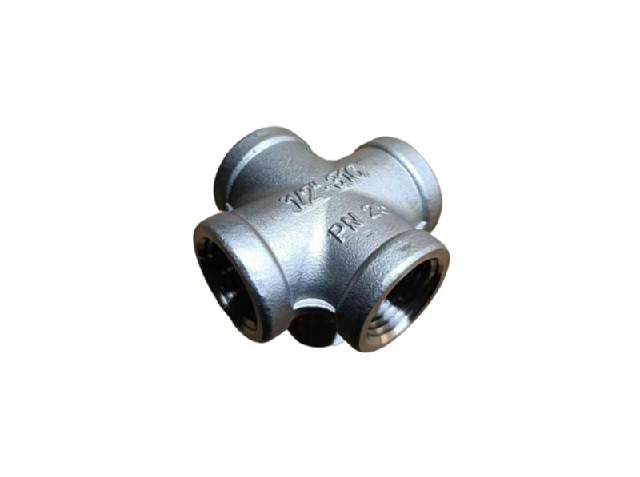4-Way Valve: Understanding Its Functions and Applications
How does a 4-way valve work?
A 4-way valve operates by utilizing a sliding or rotating mechanism to direct the flow of fluid through the different ports. It typically has two inlet ports, an A and a B port, and two outlet ports, an AB and a BA port. By manipulating the valve's internal mechanism, the flow can be redirected between the inlet and outlet ports, creating different flow paths.
The valve's operation depends on its design and purpose. In some applications, the valve may have a central off position, allowing complete shut-off of the flow. Other designs enable the valve to divert the fluid between two outlets or mix fluids from different inlets.
Applications of 4-way valves
4-way valves find extensive use in various industries and applications due to their flexibility and ability to control the direction of fluid flow. Some common applications include:
HVAC Systems: 4-way valves are used in heating, ventilation, and air conditioning (HVAC) systems to control the flow of refrigerants and regulate the direction of the refrigerant flow.
Pneumatic Systems: These valves are employed in pneumatic systems to direct the airflow and control the movement of actuators such as cylinders and motors.
Hydraulic Systems: 4-way valves are crucial components in hydraulic systems, enabling the control of hydraulic fluid flow and the operation of hydraulic cylinders, motors, and directional control valves.
Industrial Processes: They find application in various industrial processes, such as manufacturing, chemical processing, and water treatment, where precise control of fluid flow is necessary.

Benefits of using 4-way valves
The use of 4-way valves offers several benefits, making them a preferred choice in many fluid control applications. Some advantages include:
Versatility: 4-way valves provide multiple flow path options, allowing flexible control of fluid direction and enabling different operating modes.
Efficient Flow Control: These valves ensure precise control over fluid flow, enabling efficient operation and enhanced system performance.
Simplified System Design: By incorporating a single valve with multiple ports, 4-way valves simplify system design, reducing the number of required components.
Space and Cost Savings: Their compact design and versatility result in space savings and cost reductions in piping systems.
Enhanced Safety: Properly selected and maintained 4-way valves contribute to system safety by controlling fluid flow and preventing malfunction or damage.
Types of 4-way valves
4-way valves come in different types, each suitable for specific applications. Some commonly used types include:
Ball Valves: These valves use a rotating ball with a bore to control fluid flow. They provide reliable sealing and low torque operation, making them suitable for a wide range of applications.
Butterfly Valves: Butterfly valves use a disc mounted on a rotating shaft to control fluid flow. They offer fast actuation and high flow rates, making them suitable for large-scale systems.
Plug Valves: Plug valves use a cylindrical or tapered plug to regulate fluid flow. They provide low resistance to flow and tight sealing, making them suitable for high-pressure applications.
Diaphragm Valves: These valves utilize a flexible diaphragm to control fluid flow. They offer excellent sealing properties and are commonly used in applications requiring corrosion resistance.
Factors to consider when selecting a 4-way valve
Selecting the right 4-way valve for a specific application is crucial for optimal system performance. Several factors should be considered during the selection process, including:
Fluid Compatibility: Ensure that the valve material is compatible with the fluid being controlled to prevent corrosion or contamination.
Flow Rate and Pressure: Determine the required flow rate and operating pressure range to choose a valve that can handle the system's demands.
Temperature Range: Consider the temperature range the valve will be exposed to and select a valve with suitable temperature ratings.
Actuation Method: Determine the preferred actuation method, such as manual, electric, pneumatic, or hydraulic, based on the system's requirements.
Valve Size and Connection Type: Select the appropriate valve size and connection type to ensure compatibility with the existing piping system.
Where to buy 4-Way Valve?
Authorized by the National Department of Foreign Economic Relations and Trade, Shijiazhuang Jinjieber Imp.& Exp. Co. Ltd specializes in hardware, construction materials, steel, light industrial and chemical products, machinery, and electronic equipment.
Stainless Steel Casting Four-Way Joint
 English
English
![]()
 English
English
 Russian
Russian
 French
French
 Spanish
Spanish













